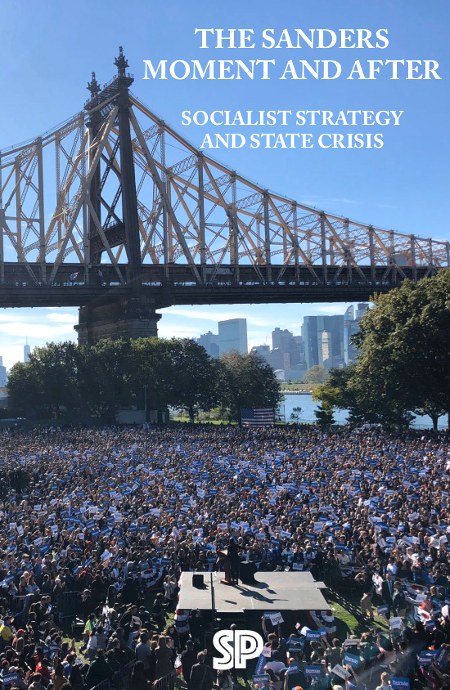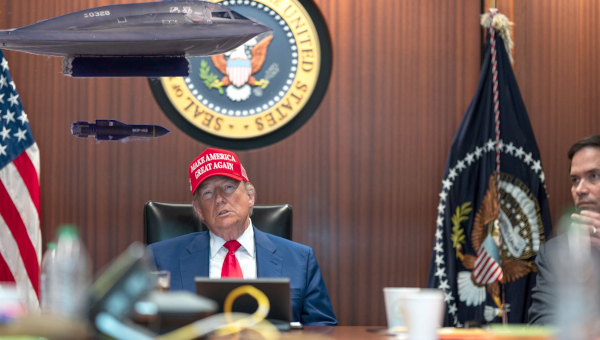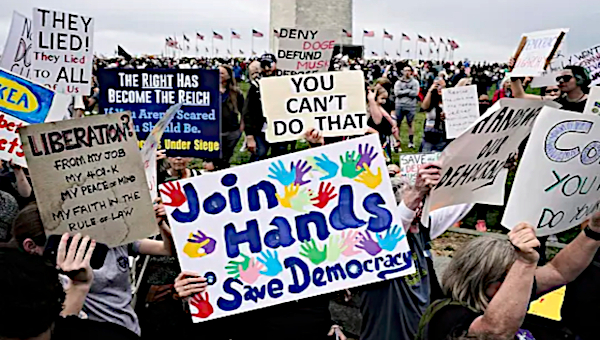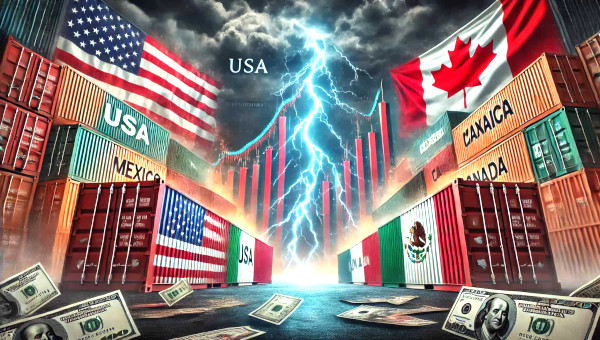From the Streets to the State and Back Again
Learning From the Sanders Moment
The essays gathered in this collection were written in the midst of an escalating and multifaceted crisis situation in the United States. They address the search for a socialist politics in a highly uncertain period during which the legitimacy – if not the structural persistence – of neoliberalism came under increasing strain.
During that time, Bernie Sanders’ campaigns were seen as an apparent breakthrough for the left, allowing the widespread delegitimation of neoliberal ideology to be expressed within the parameters of the party system. Their failure compels socialists to return to difficult organizational and strategic questions – and the answers are as uncertain as ever. As contemporary analyses of this period, these essays both shed light on the forces that led to the present conjuncture, and illustrate the political and organizational challenges that are relevant in the post-Sanders moment.
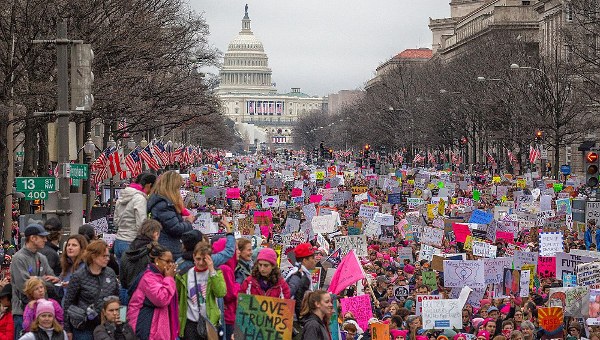
The promise of Sanders spoke to a generation that came of age after the “anti-globalization movement” of the 1990s had come and gone, appearing to transcend hollow slogans about “changing the world without taking power.” Although Occupy Wall Street created important political and ideological space in the context of the economic fallout of the Recession, its suppression by the authorities as suddenly as it emerged onto the political scene a mere two months later left little if any organized infrastructure behind.
The limits of what had been accomplished through mass demonstrations alone was apparent to those who came out of the recession facing a precarious future, with lowered standards of living, eroding social protections, growing state surveillance and repression, and a rapidly intensifying ecological crisis.
For this new generation of activists and organizers, Sanders’ upstart 2016 campaign appeared to be a viable route to claiming a part of state power. Following Sanders in unabashedly proclaiming themselves ‘democratic socialists’, these activists flocked to the Democratic Socialists of America (DSA), transforming it practically overnight from what was effectively a grassroots progressive caucus within the Democratic Party into a vehicle for a left politics still to be defined.
Some of Sanders’ more ambitious supporters saw his campaign as the first step in an eventual “dirty break” from the Democratic Party. According to this strategy, socialists would run as Democrats for national, state, and municipal offices. These campaigns would serve as vehicles for strengthening the bonds between democratic socialists in office, on the one hand, and community organizers and rank-and-file trade union activists, on the other. Ultimately, it was argued, this would create the base for an autonomous socialist party and a split from the Democratic Party. Given the stranglehold of the two corporate parties on electoral politics, this seemed to offer the best path to a viable mass socialist party.
From the Polls to the Streets
Sanders’ failure to secure the nomination in 2016, and again in 2020, cast doubt on this strategy in the eyes of many. To be sure, the magnitude of the defeat this represented was often overstated, as important electoral victories for democratic socialists across the country at the state and local level has clearly attested. Nevertheless, there was a marked lack of clarity around when and how a ‘dirty break’ would be executed, and weak structures of democratic accountability between DSA-endorsed candidates elected to office and their organizational basis.
In addition, despite the invocation of Andre Gorz’s concept of “non-reformist reforms” – whereby an accumulation of reforms would pave the way toward more radical social change – the concrete steps from expanding programs for social provision to a deeper, revolutionary transformation was never clearly elaborated.
In the spring of 2020, shortly after Sanders suspended his campaign, a mass wave of urban uprisings on a scale not seen since the 1960s swept the country in response to police brutality and the state coercion of black and brown working class people – which had become part and parcel of neoliberal urban governance. Despite putting forward his own plan for police reform, Sanders’ inability to play a leading role in these mass mobilizations seemed to further underscore the revival of street protest as the best path toward social change, and the limits of working “within and against” the Democratic Party. The size of the demonstrations, the breadth of support they claimed, and their militant and radical nature has cast further doubt on the new socialists’ electoral strategy.
Some have taken these mobilizations as an indication of a deep crisis of the ruling class, or even signaling the beginning of a prolonged insurrectionary moment. Yet beyond the footage of burning police precincts and “autonomous zones” remains a deeply-entrenched two-party system which is supported by a capitalist class that has shown no sign of the kinds of splits or crises that would indicate anything like a revolutionary opening. None of the political forces currently on the scene seem capable of offering a serious alternative to the basic trajectory of neoliberal globalization, however ideologically discredited this has become.
While the neoliberal center has consolidated its control over the Democratic Party, growing tendencies toward open fascism are apparent in the rhetoric of Donald Trump as well as in the structures and practices within the coercive apparatus of the state. These were clearly visible, for instance, in the rapid deployments by federal and state governments in response to the urban rebellions, as well as in the mobilization of various paramilitary groups that were apparently connected with them. But the consolidation of ruling class power around a hardening of the state and “law and order” has been advanced by both parties – albeit in different ways. This again presents the basic dilemma of how to move beyond street protests to break the deadlock of the two-party system.
Beyond the Two-Party Deadlock?
The pieces presented here trace how the convergence of these novel forces has its roots in the 2008 financial crisis. That moment sparked new challenges to the hegemonic alliance between the neoconservative Republican and neoliberal Democratic forces – both in the form of the nativist Tea Party and the progressive Occupy movement. At the time, those twin pressures from left and right indicated growing ideological divergences both within and between the respective parties. The critical question now is where these conflicts within the two parties stand today – both in the form of ongoing tension within the Republican Party between Trump and what remains of the old establishment, on the one hand, and the Democrats’ successful squelching of Sanders’ “political revolution,” on the other.
Positioning itself directly against the Obama-Clinton Democratic Party and new social movements like #BlackLivesMatter, the first Trump campaign took advantage of the growing legitimacy crisis to secure an unexpected win. Bolstered by the explicitly counter-majoritarian institutions of the American constitutional order – winning via the Electoral College despite a significant defeat in the popular vote, and governing in conjunction with Republican control of the Senate and the courts – Trump has succeeded to a large extent in bringing previously marginal far-right tendencies front and center within the GOP and creating space for fascist mobilization at the grassroots. Trump’s victory has also created intense contradictions within the state apparatuses, his feud against the “deep state” being just one example.
The perpetuation of neoliberal hegemony depends, in part, on the stabilization of the two-party system through polarization and negative partisanship between Republicans and Democrats. To that extent, Trump has exacerbated the dynamic of negative partisanship, with the “first past the post” electoral system reinforcing the party duopoly and driving partisan voters further apart into their respective camps. Yet this has also led to a situation where, alongside their deeper entrenchment, the parties’ effectiveness as mechanisms of legitimation has become increasingly volatile and riven by internal conflicts and pressures. Thus, we are dealing with a paradox, where growing ideological distance between the parties further entrenches them in the state institutional complex, even while representing a threat to the ultimate stability of the constitutional order as a whole.
However, it is also crucial to emphasize that, regardless of the outcome of the ideological struggle underway within the two parties, the institutional strength and entrenched neoliberal structure of contemporary capitalism, which underpins the party system, remains. Despite their sharp ideological differences, both parties have upheld a shared commitment to the project of global economic integration under American leadership. If Trump has threatened this in certain respects, so far he has been unwilling to challenge capital to the extent that would be necessary to substantially break with neoliberal order.
The arrival of the COVID-19 pandemic has sent a further shock wave through the entire social formation. It has underscored the deep-rooted social inequalities cultivated by forty years of neoliberal policy, prioritizing the rapid commodification of essential social goods, maintaining austerity, and rolling back welfare state programs, all the while eroding state logistical and planning capacities in line with the “New Public Management.” The United States’ lack of social protections, with basic health care tethered to employment, has put essential workers especially at risk. Along with prompting a broader crisis of social reproduction linked to both elder and child care, COVID has also exacerbated divisions between working class professionals and service and manual workers – even as the former now also find themselves in increasingly precarious positions.
The possibility that a Democratic administration, along with possible control over one or even both houses of Congress, will return to the neoliberal policies which generated the crisis in the first place – or even turn to austerity in the wake of the huge deficits created during the COVID crisis – would intensify its legitimacy crisis once again. This, of course, would also further mobilize the Republican far-right.
While the Republican establishment may have once believed they could control this dynamic, it has now become a breeding ground of neo-fascist radicalization. Even though much of the ruling class today seems to desire a return to neoliberal normalcy in the face of Trump’s chaos, this could easily shift as the ideological strength of the far-right builds and the means of state legitimation, including elections, become increasingly disorganized and turbulent. The longer the coronavirus crisis persists, exacerbated by waves of political unrest and ecological catastrophe in the forms of hurricanes, fires, and droughts, the more capital will be tempted to swing to the right as a means to resolve the legitimacy crisis and justify an increasing turn to authoritarianism.
Here, the formidable repressive institutions of the American state – its police forces, national guardsmen, military, and the massive carceral apparatus that undergirds them – in tandem with “independent” militias, may yet become the staging grounds for an even more indiscriminate and concentrated far-right offensive on all shades of the left than has taken place so far.
The Search for a Socialist Organizational Form
From Occupy to Sanders to the present uprisings, the strategic dialectic of the left over the past decade has swung from the streets to the state, and back to the streets. These oscillations reflect the disorganization and disorientation of left forces, which have been unable to regroup or break through the basic impasse presented by the entrenchment of the two-party system. The decomposition and fragmentation of the left has been reflected in the defeat of the working class and its organizations over the neoliberal period. Whether or not this can be reversed remains an open question, as does whether the ephemerality of street protests can be channelled into a systemic, popular challenge to capitalism absent a robust and vibrant trade union movement.
If the Sanders moment suggested that a truly mass socialist politics was possible in the United States, it also pointed to the underlying limits of how far this could go without a much more substantial organization, with much deeper roots in working class communities. As the attention of the left again turns from the state to the streets, we are forced to confront the question of whether the Sanders campaign actually succeeded in creating political infrastructure capable of outlasting his electoral campaigns. This question, too, remains an open one.
DSA’s growth can be attributed, in part, to Sanders’ rhetorical popularization of the “democratic socialism” label. But perhaps just as importantly, what has distinguished it from similar small organizations with roots in the New Left is its ideological flexibility, “big tent” multi-tendency organizational structure, and comparatively low threshold to entry and membership. In that sense, for many millennial activists who became politicized after the social movements of the Obama years, DSA provided a convenient alternative to the more onerous task of building a new organization from scratch.
DSA grew in part because it was there, and appeared to offer a vehicle to articulate a new socialist vision that was not beholden to the legacies of either the old or new left. Yet this flexibility also created no shortage of ideological confusion, as well as difficulties in carrying out unified national political education, strategizing, and action. The openness to moving beyond emulations of the Bolshevik experience a century ago often led to the opposite identification of socialism with the New Deal or the European welfare state. In this way, some of the democratic socialist activists tended to overlook the inadequacies of postwar social democracy – which had been painfully revealed by decades of neoliberal restructuring.
Indeed, the fact that the New Deal never developed into a European-style welfare state threw into sharp relief the ambiguities and contradictions involved in much of the left, following Sanders, claiming Roosevelt’s mantle. Like European social democracy, the New Deal never aspired to fundamentally transform the state or transcend capitalist property relations. As a result, these gains were susceptible to being whittled away by the pressures of a globalizing capitalism and working class defeat and demobilization. This mixed legacy was powerfully illustrated by the fact that both an avowed socialist like Sanders and an avowed “capitalist” like Elizabeth Warren could both draw on the New Deal’s legacy and frame their agendas as completing Roosevelt’s project.
If all this suggested how much deeper a socialist transition would have to be than providing Medicare for All, it also pointed to the scale of the transformation that would be required in the most prominent legacy of the New Deal: the trade unions themselves. This was clear from the labor movement’s response to Bernie’s two campaigns, with few honorable exceptions and despite the tenacity of rank-and-file activists. Indeed, given the limited political horizons of the trade unions today, it can hardly be said that declining union density alone accounts for the neoliberal restructuring of recent decades.
Thus simply aiming to increase union membership doesn’t address the question of what kind of unions we are trying to build. Transforming unions into spaces for class formation and militant organizing requires creating democratic unions that aim to build the workers’ capacities and promote class solidarity, rather than pursuing narrow bargaining interests of specific sectors. Building linkages between workers in different sectors necessary to accomplish this is the crucial task of a socialist organization.
Base-Building for the Political Revolution
This lack of support among unions was a crucial deficit in the base for Sanders’ “political revolution.” Though poll after poll pointed to a public that felt favorably toward his supposedly ‘radical’ platform, Sanders’ campaign was unable to parlay this into the mobilization necessary to win – let alone into what would have been required to implement this agenda in the face of opposition from both Democrats and Republicans.
Already showing concerning signs that the political revolution was not producing the absolute voter turnout expected, and with Sanders’ gains among young and minority voters being offset by the higher turnout among moderate suburbanites, the campaign was additionally caught off guard by the rapid coalescence of the center behind Biden. Compounding the problem was the coronavirus shutdown, prompting calls for party unity and the suspension of the campaign rather than the possibility of a contested convention.
The fact that the Sanders campaigns were able to advance as far as they did is more indicative of the organizational and ideological weakness of the Democratic Party, rather than the strength of the left mobilized behind Sanders. If the coming together of the center around Joe Biden showed an impressive ability for the establishment to protect itself in the face of a socialist challenge, the sheer contingency of this – in terms of the lack of institutional mechanisms for systematically disciplining progressive upstarts – and the difficulty in executing such an exceptional maneuver also highlighted openings and possibilities.
There are certainly gains to be made by working on the Democratic ballot line, both in terms of the broader promotion of left ideas and the advocacy of social and environmental measures to mitigate the present crises. One possible implication of waging electoral campaigns at the state and local levels is that socialists could plausibly form a new “progressive” caucus within the Democratic Party’s larger coalitional ecology. Yet in the absence of more substantial base-building among trade unions and working class communities, and a strong coterie of socialists in office at the local, state, and national levels prepared to execute a split, it is likely that the socialist left will either remain embedded within the framework of the Democratic Party or on the margins of the political field.
While the Democratic establishment may be more than happy to use the presence of socialists to reestablish the party’s legitimacy, its proximity to capital and lack of any structures of bottom-up accountability makes it extremely difficult to imagine seriously challenging the party’s basic neoliberal orientation from within.
In this context of left weakness, centrist retrenchment, and far-right offensive, the old dichotomy between reformist and revolutionary roads to state power is no longer the pertinent question. As DSA reorients itself away from the Sanders campaigns and toward the current wave of mass uprisings, it is important to develop a strategy that learns from the experience of the Sanders’ campaigns – both their successes and limitations.
Among the most important lessons of the Sanders moment is the continued importance of searching for, and building, an organizational form capable of articulating the political agency of a currently weak and fragmented working class. Such an organization must be able to effectively mediate between the street and the state, and articulate the energies of street protests and the small pockets of independent labor agitation to the electoral gains of the previous four years.
Whether the DSA is the organizational terrain on which this political project will unfold remains to be seen. Until now, its political strategy and tactics have been based on fusing the electoral road with extra-parliamentary struggles and movements, all the while attempting to develop an organizational identity as more than a Democratic pressure group – but not quite a party. Yet the two-party deadlock means it now faces a new dilemma: avoiding both coalescing into a left caucus within the Democratic Party, or riding another cycle of protest and subsequent demobilization.
Despite their significance, the current mass protests have not articulated a strategy capable of transcending the limits of Occupy, nor the subsequent Trump-era protest movements like the Women’s March and the demonstrations against the “Muslim ban.” Similarly, those advocating for a dirty break from the Democratic Party remain at great risk of absorption by its institutional inertia – particularly in the absence of a clear plan for organizing and executing this split, let alone bridging between moderate reforms and eventual socialist transition.
Perhaps because of this ambiguity, the relationship between electoral politics and base building has remained undeveloped, being largely improvised during both an unraveling political crisis and the unexpected growth of a socialist left that occasionally seemed unsure of what to do with its new prominence.
Given the ongoing entrenchment of the neoliberal model, overcoming these dilemmas and building a truly mass socialist politics demands learning the right lessons from the Sanders moment: the need for a renewed focus on base building to develop organizational capacities both outside and within institutions like the Democratic Party; to transform trade unions from sectoral bargaining vehicles to mechanisms of class-formation; and to cultivate deeper and more substantial roots in working class communities for socialist politics.
Only by building a mass base and experimenting with new organizational forms can the new socialist movement hope to gain the institutional traction to become a viable alternative to ecological chaos, immiseration, and far-right authoritarianism. •


